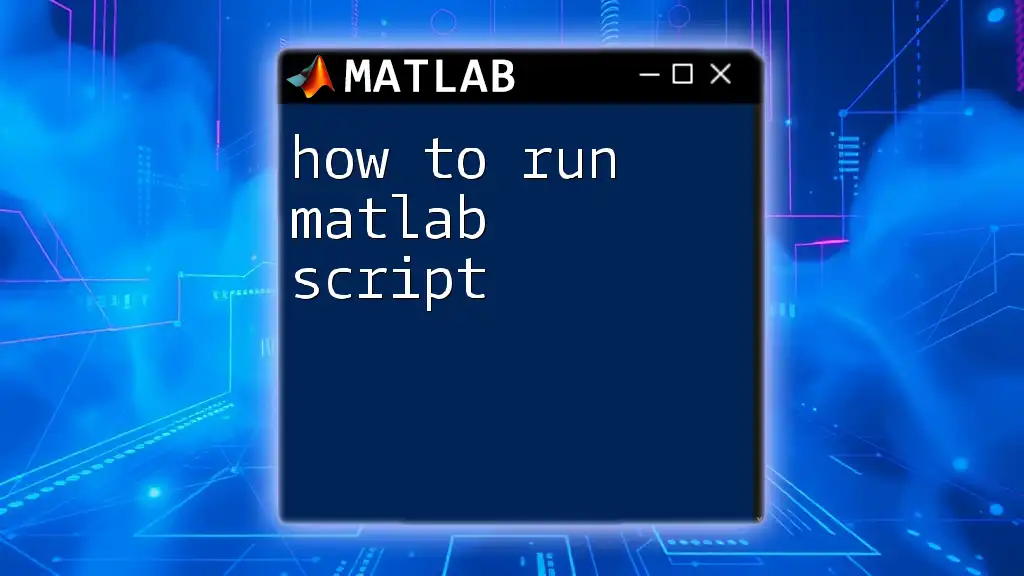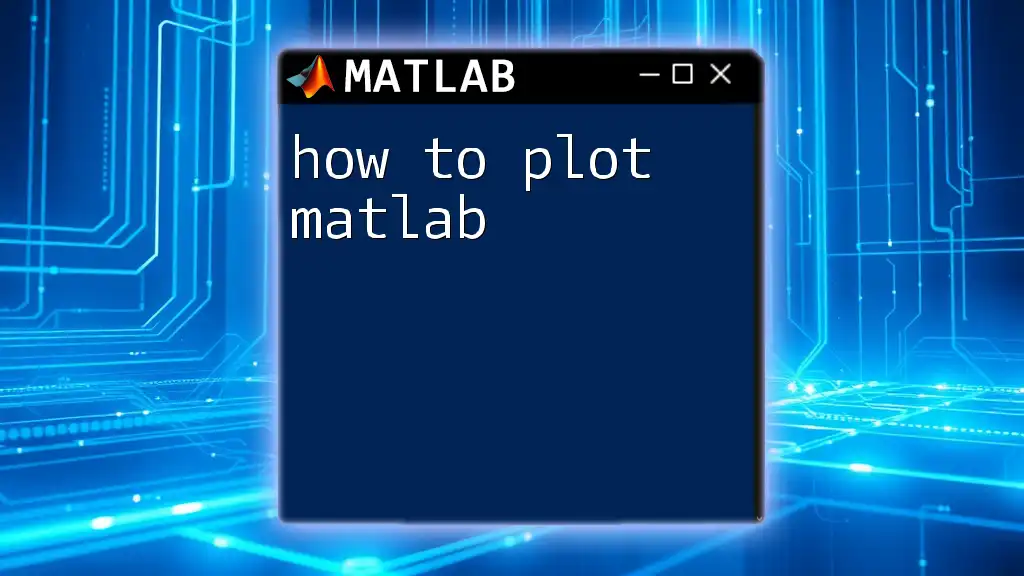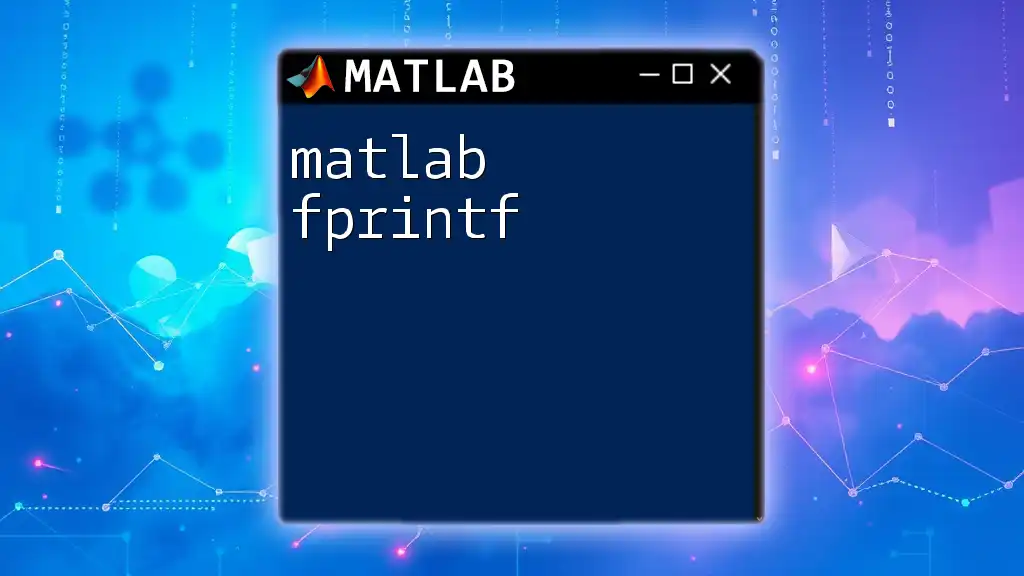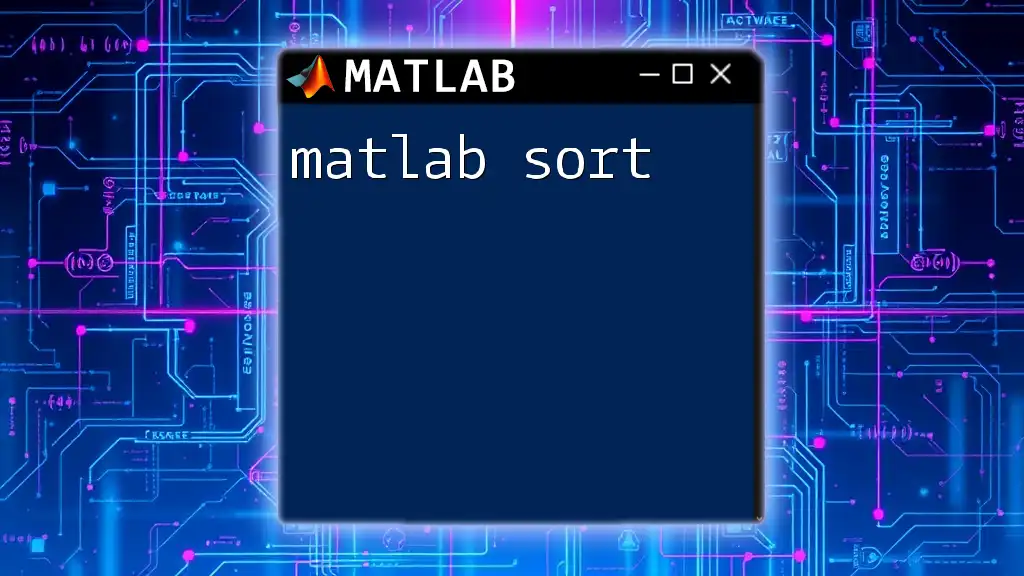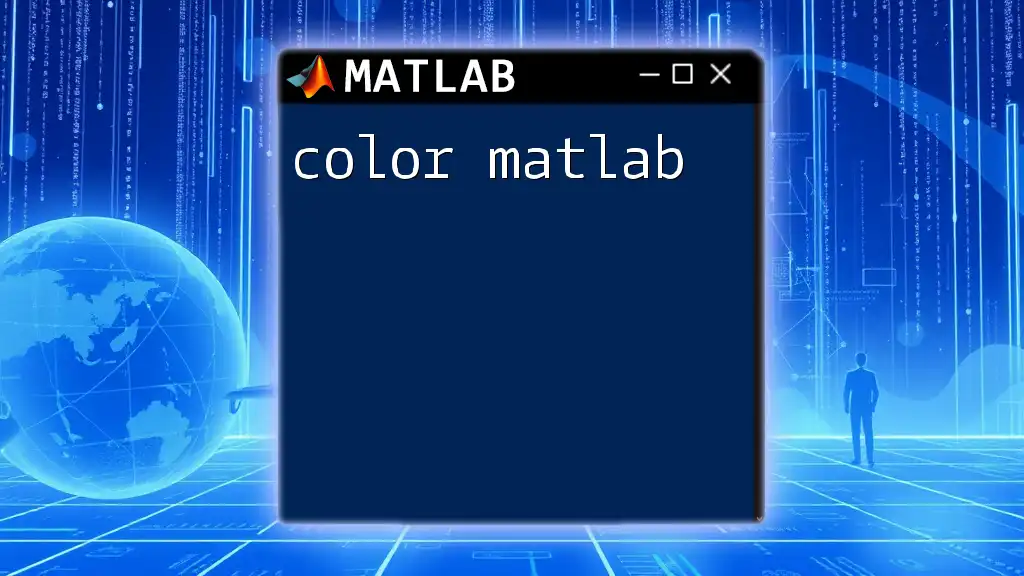To run a MATLAB script, simply ensure the script is saved with a `.m` extension and execute it by typing the script name (without the extension) in the Command Window.
myScript
Understanding MATLAB Scripts
What is a MATLAB Script?
A MATLAB script is a file containing a sequence of MATLAB commands that are executed together. Unlike functions, scripts do not accept input arguments or return output values. They operate on data in the workspace directly and are particularly useful for automating tasks or conducting a series of commands in a consistent way. MATLAB scripts are widely used in educational contexts, simulations, and data analysis processes.
Structure of a MATLAB Script
The structure of a MATLAB script is simple but vital for effective programming. Typically, a script will include comments, commands, and output statements. Comments are written using the percentage symbol (%) and provide context or explanations for the code.
Here’s a basic example of the script structure:
% This is a comment
a = 5;
b = 10;
c = a + b;
disp(c);
In this example:
- The first line is a comment describing the code that follows.
- The next three lines declare variables `a` and `b`, perform a calculation, and display the result using the `disp` function.
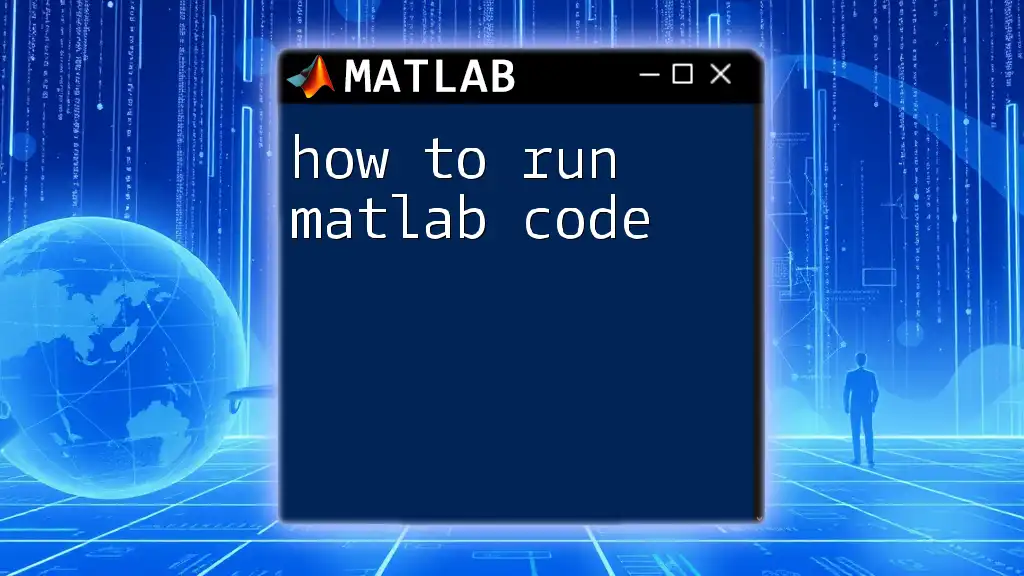
Setting Up Your MATLAB Environment
Installing MATLAB
Installing MATLAB is the first step in your journey. Follow these simple steps to get started:
- Download the Installer: Visit the official MathWorks website and download the appropriate installer for your operating system (Windows, macOS, or Linux).
- Run the Installer: Open the downloaded file and follow the installation prompts.
- Activate MATLAB: After installation, you will need to activate MATLAB using the license information provided during purchase or through your organization.
- Install Additional Toolboxes: Depending on your needs, consider installing additional toolboxes that enhance MATLAB's capabilities for specific applications.
Launching MATLAB
After installation, you can launch MATLAB in several ways:
- Desktop Shortcut: If you created a shortcut during installation, double-click it to start MATLAB.
- Command Line: On some systems, you can also launch MATLAB from the command line by typing `matlab`.
Once MATLAB is launched, you will be greeted by its user interface, which consists of several key sections:
- Command Window: Where you can run commands interactively.
- Editor: For writing and editing scripts.
- Workspace: Displays variables currently in use.
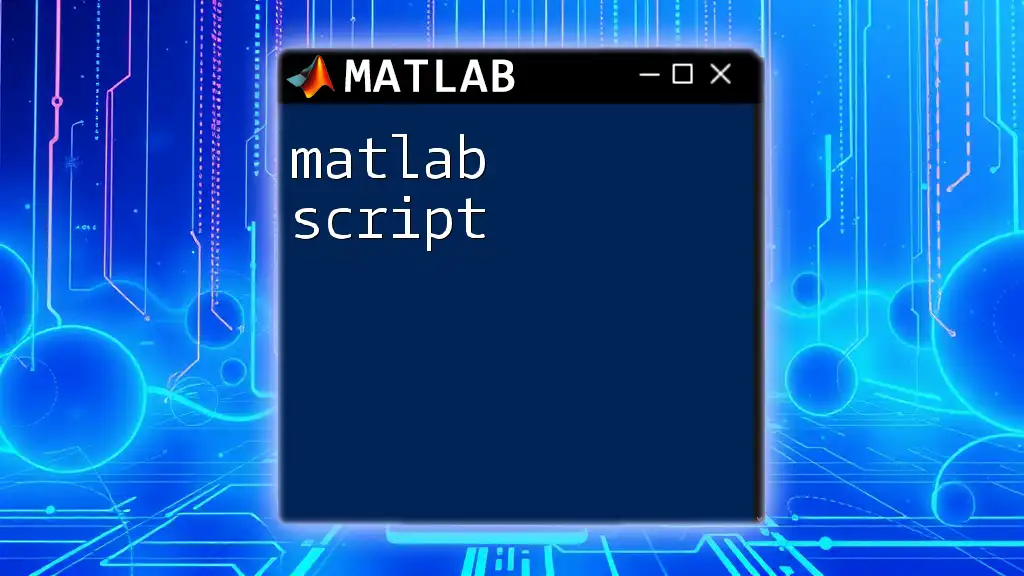
Creating and Saving a MATLAB Script
Writing Your First Script
To create your first MATLAB script, follow this straightforward approach:
- Open the MATLAB Editor by either clicking on the "New Script" button or typing `edit myFirstScript.m` in the Command Window.
- Write your code in the editor.
Here’s an example of writing a basic script:
% This script calculates the area of a rectangle
length = 5;
width = 10;
area = length * width;
disp(['The area of the rectangle is: ', num2str(area)]);
Saving Your Script
Once you've written your script, you need to save it. Make sure to choose a descriptive name and save it with a `.m` file extension, which is essential for MATLAB to recognize scripts.
When saving:
- Use Descriptive Names: Avoid generic names like "script1" and opt for something that reflects the content, like "calculateRectangleArea.m."
- Organize Scripts in Folders: Keep similar scripts together in dedicated folders. This practice improves navigability as you create more scripts.
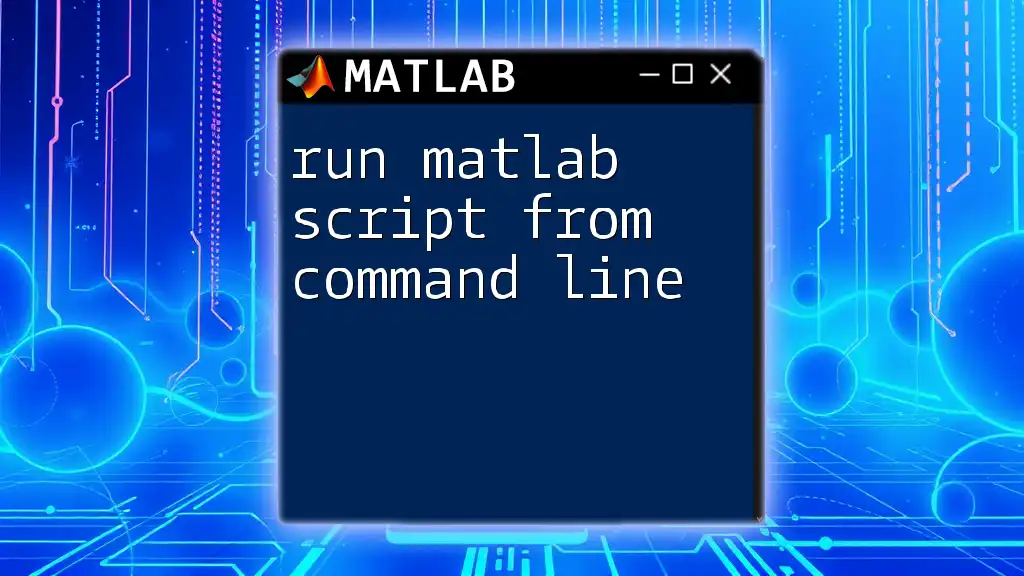
Running MATLAB Scripts
Running Scripts from the Command Window
Executing a MATLAB script from the command window is straightforward. Simply type the name of your script (without the `.m` extension) and press Enter. For example:
>> myFirstScript
Running Scripts from the Editor
There are convenient ways to run scripts directly from the MATLAB Editor:
- Run Button: At the top of the editor, there is a green "Run" button. Clicking this will execute the currently open script.
- Shortcut Key: You can also use the keyboard shortcut F5 to run your script while focused in the editor.
Using the Current Folder Window
The Current Folder window displays all files in your current directory. To run a script from here, simply double-click on the script's filename. This action will open the script in the editor and execute it once it is saved.
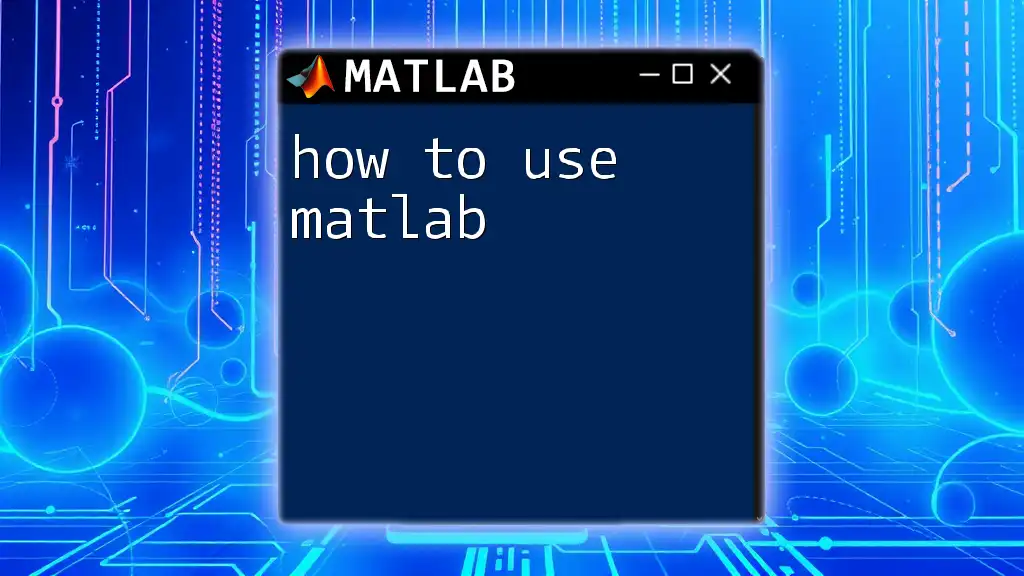
Debugging and Error Handling
Common Errors When Running Scripts
Errors are a natural part of programming. Common error messages might include syntax errors, undefined variables, and index out of bounds. Learning to interpret these messages is key to effective debugging.
Here’s how to troubleshoot:
- Look for Typos: Check for spelling errors in your variable names or function calls.
- Use `help` Command: If you’re getting errors regarding built-in functions, type `help functionName` in the command window to review documentation and usage examples.
Using Debugging Tools
MATLAB provides several tools to help debug scripts effectively:
-
Set Breakpoints: You can set breakpoints by clicking in the left margin of the editor next to the line number. This allows you to step through the code line by line and inspect variable values.
To set a breakpoint when an error occurs in your script, you might use the command:
dbstop if error
Using these tools can greatly enhance your ability to identify and correct issues in your scripts.
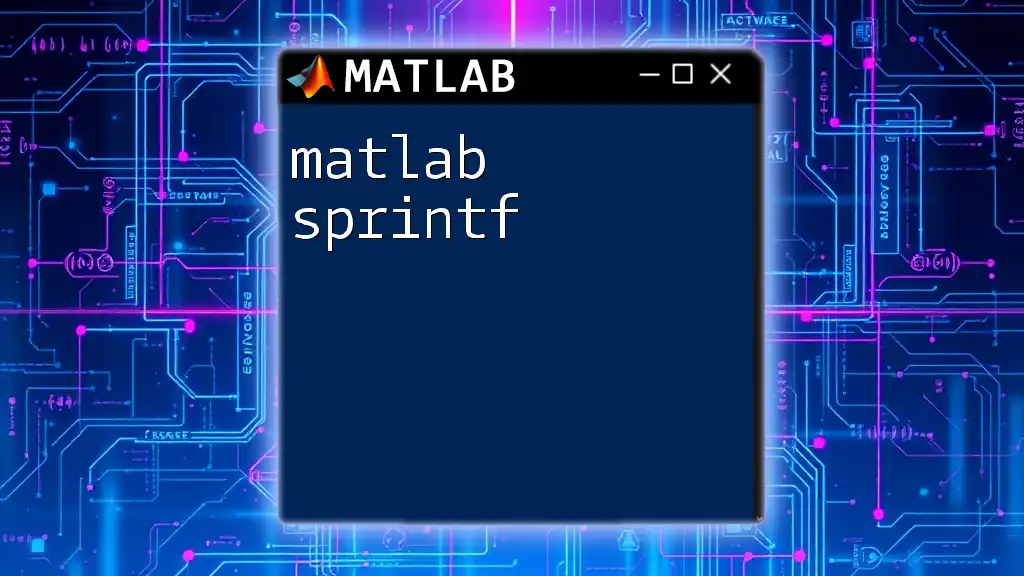
Working with Script Output
Displaying Results in Command Window
To present the results of your calculations in the command window, MATLAB offers several effective functions. The most basic is `disp`, which outputs text or variables easily. For formatted output, you can use `fprintf`. An example of both would be:
fprintf('The area of the rectangle is: %.2f\n', area);
Saving Output to Variables
In many cases, you may want to capture the output of a function or operation and store it in a variable for further processing. For instance:
result = sqrt(25); % result now holds the value 5
This allows for additional calculations or transformations using the `result` variable later in your script.

Best Practices for Writing and Running Scripts
Organizing Your Scripts
Maintaining a clear organization for your scripts is crucial.
- Group Related Scripts Together: Keep scripts that share a common purpose in the same directory.
- Use Meaningful File Names: This practice allows for quicker identification later on.
Documenting Your Scripts
Comments are your best friend! Use them liberally to explain why a portion of the code exists. They make it easier for others (and yourself) to understand your rationale later. Aim for clarity and brevity when commenting on complex sections of your code.
% Calculate the circumference of a circle
radius = 10;
circumference = 2 * pi * radius;
disp(['Circumference: ', num2str(circumference)]);
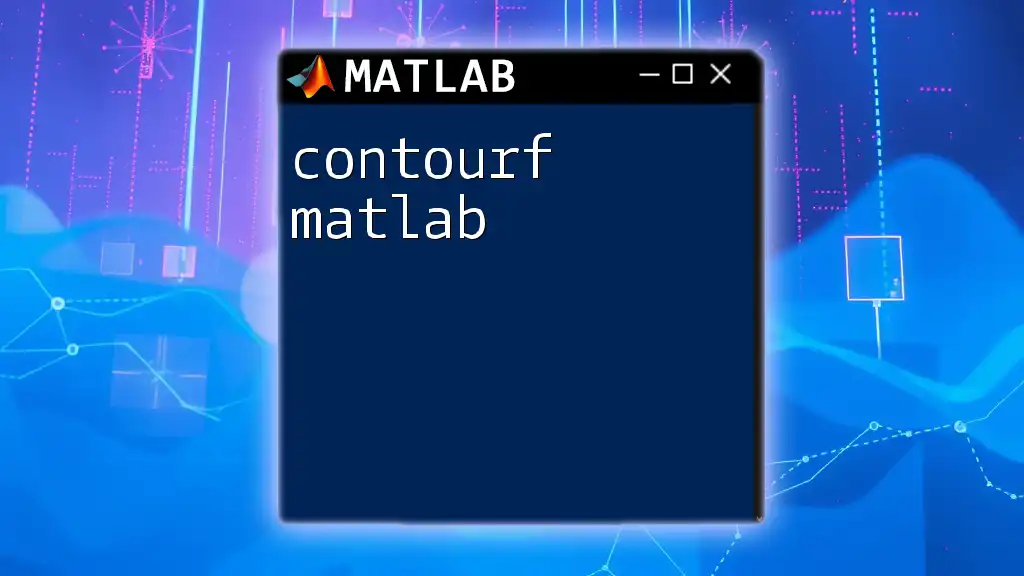
Conclusion
In this guide, we've explored the essentials of how to run MATLAB scripts—from understanding what a script is to writing, saving, executing, and debugging them. The best way to learn is through practice, so don't hesitate to start experimenting with your scripts! For those interested in diving deeper, consider joining our MATLAB training sessions for a more hands-on learning experience.
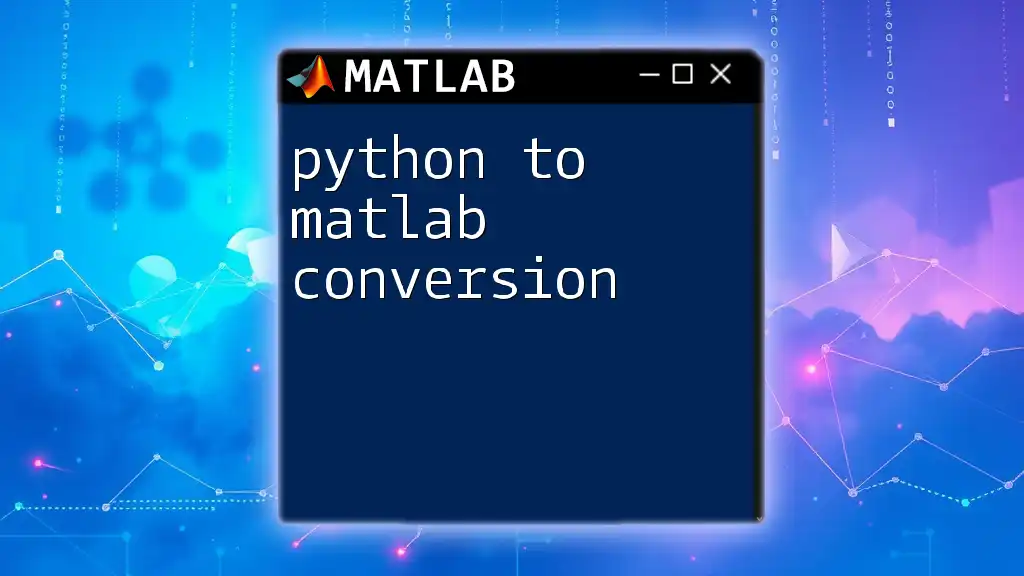
Additional Resources
For further reading and exploration, you can access the official MATLAB documentation, which offers detailed insights into various functions and commands. Consider resources like textbooks and online courses to enrich your understanding and skills in MATLAB programming. If you have any questions or need further assistance, feel free to reach out to us!

